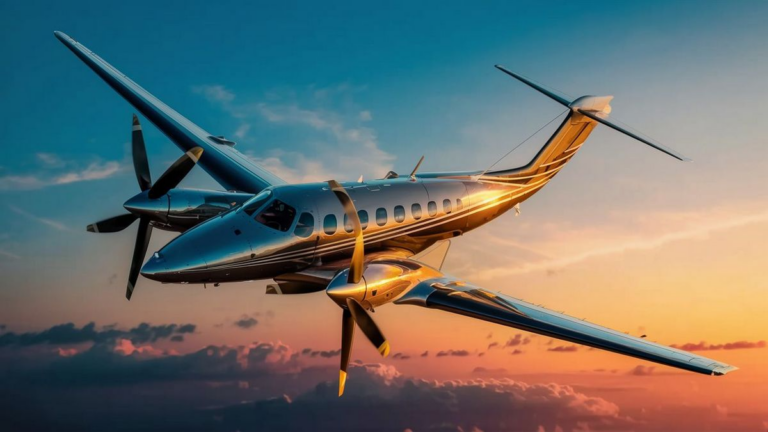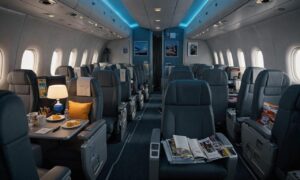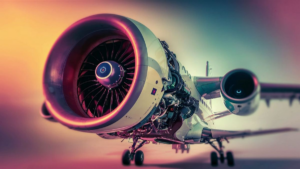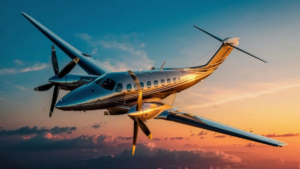When it comes to long-range private prop aircraft, discerning travelers seek not just comfort and style, but also efficiency and reliability. These aircraft cater to a niche market of individuals who prioritize privacy, flexibility, and the ability to reach remote destinations with ease. Let’s delve into the world of long-range private prop aircraft and explore the options available to those who demand the utmost in luxury air travel.
The Appeal of Long-Range Private Prop Aircraft
Long-range private prop aircraft offer a unique combination of benefits that set them apart from other modes of transportation. With their ability to access smaller airports and airfields, these aircraft provide unparalleled convenience for travelers seeking to avoid the congestion and delays often associated with larger commercial airports.
Moreover, the use of propeller-driven engines allows for greater fuel efficiency compared to jet-powered aircraft, resulting in reduced operating costs and a smaller carbon footprint. This makes long-range private prop aircraft not only a practical choice but also an environmentally conscious one.
Key Features and Considerations
When selecting a long-range private prop aircraft, several factors come into play, including range, cabin comfort, amenities, and performance capabilities. Here are some key features to consider:
- Range: The range of the aircraft determines how far it can travel without the need for refueling. For long-distance flights, a generous range is essential to reach remote destinations without multiple stops.
- Cabin Comfort: Comfort is paramount for passengers spending extended periods in the air. From luxurious seating to state-of-the-art entertainment systems, the cabin amenities should cater to the needs of discerning travelers.
- Performance: Prop aircraft come in various sizes and configurations, each offering different performance capabilities. Factors such as cruise speed, altitude capability, and payload capacity influence the overall performance of the aircraft.
- Operational Efficiency: Efficiency is crucial for private aircraft owners, whether it’s maximizing fuel efficiency or minimizing maintenance downtime. Choosing an aircraft with reliable performance and low operating costs is essential for long-term ownership satisfaction.
Popular Long-Range Private Prop Aircraft
Several aircraft models stand out in the realm of long-range private prop aircraft, offering a blend of performance, comfort, and versatility. Here are a few notable examples:
| Aircraft Model | Range (NM) | Max Cruise Speed (KTAS) | Passenger Capacity |
|---|---|---|---|
| Cessna Caravan EX | 1,160 | 185 | Up to 14 |
| Pilatus PC-12 NG | 1,845 | 285 | Up to 9 |
| Quest Kodiak 100 Series II | 1,132 | 183 | Up to 10 |
These aircraft exemplify the capabilities of modern long-range private prop aircraft, offering impressive range, performance, and passenger comfort.
Long-range private prop aircraft represent the pinnacle of luxury air travel, providing discerning travelers with the ultimate combination of comfort, convenience, and performance. Whether embarking on a business trip or a leisurely getaway, these aircraft offer unmatched versatility and freedom to explore the world’s most remote destinations. With their range, efficiency, and luxurious amenities, they continue to redefine the standard for private air travel.
Advantages of Propeller-Driven Engines
Propeller-driven engines offer several advantages over jet-powered engines, making them a preferred choice for certain aircraft and missions:
- Fuel Efficiency: Propeller-driven engines tend to be more fuel-efficient, consuming less fuel per hour of flight compared to jet engines. This translates to lower operating costs, particularly over long distances.
- Lower Operating Costs: In addition to fuel efficiency, propeller-driven engines often have lower maintenance costs and longer overhaul intervals, resulting in overall lower operating expenses for aircraft owners.
- Noisy Environment: While some may perceive propeller-driven aircraft as noisier than jets, modern advancements in engine design and soundproofing technology have significantly reduced cabin noise levels, providing a quieter and more comfortable flying experience.
Environmental Impact
Long-range private prop aircraft offer environmental benefits compared to their jet counterparts:
- Reduced Carbon Footprint: Propeller-driven engines typically emit fewer greenhouse gases per passenger mile compared to jet engines, making them a more environmentally friendly option for air travel.
- Lower Emissions: Propeller-driven engines produce lower levels of nitrogen oxides (NOx) and other pollutants compared to jet engines, contributing to improved air quality and reduced environmental impact.
- Sustainable Aviation Fuel (SAF): Many operators of long-range private prop aircraft are exploring the use of sustainable aviation fuel (SAF) to further reduce their carbon footprint and minimize their environmental impact.
Frequently Asked Questions
Here are some frequently asked questions about long-range private prop aircraft:
- Are propeller-driven aircraft slower than jets? While propeller-driven aircraft generally have lower cruise speeds than jets, they offer other advantages such as greater fuel efficiency, lower operating costs, and the ability to operate from shorter runways.
- What is the typical cabin layout of a long-range private prop aircraft? Cabin layouts vary depending on the aircraft model and configuration, but they often feature luxurious seating arrangements, modern entertainment systems, and spacious interiors designed for comfort during long flights.
- Can long-range private prop aircraft fly internationally? Yes, many long-range private prop aircraft are capable of flying internationally, provided they meet the necessary regulatory requirements and have the range to reach the desired destinations.
See also:






